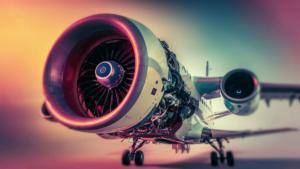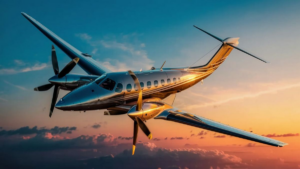When it comes to the impressive capabilities of aircraft carriers, one of the most intriguing questions revolves around the number of planes these vessels can accommodate. Aircraft carriers serve as mobile airbases, playing a crucial role in naval operations and projecting power across vast expanses of ocean.
The Design and Capacity
Understanding how many planes can fit on an aircraft carrier requires delving into the intricacies of its design and capacity. These vessels are meticulously engineered to maximize their operational efficiency while accommodating a significant number of aircraft.
Deck Space
Deck space is a critical factor in determining the number of planes that can be stationed on an aircraft carrier. These massive ships feature expansive flight decks that can accommodate various types of aircraft, including fighter jets, helicopters, and reconnaissance planes.
Hangar Capacity
Beneath the flight deck lies the hangar, a cavernous space where aircraft are stored, maintained, and prepared for launch. The hangar capacity significantly contributes to the overall number of planes that can be carried by an aircraft carrier.
Classification of Aircraft Carriers
Aircraft carriers come in different sizes and configurations, leading to variations in their carrying capacities. These vessels are classified based on factors such as displacement, deck configuration, and propulsion systems.
Types of Carriers
There are several types of aircraft carriers, ranging from small amphibious assault ships to massive nuclear-powered supercarriers. Each type has its unique characteristics and capabilities, influencing the number of planes it can accommodate.
Supercarriers
Supercarriers, such as the Nimitz-class and Gerald R. Ford-class carriers, are the largest and most powerful warships ever built. These behemoths can carry upwards of 70 aircraft, including fighter jets, helicopters, and support aircraft.
Light Carriers
Light carriers, also known as escort carriers or helicopter carriers, are smaller in size compared to their supercarrier counterparts. While they may not carry as many planes, they still play a vital role in supporting naval operations.
Operational Considerations
While aircraft carriers have impressive capacities, operational factors also play a significant role in determining the number of planes they can effectively deploy.
Mission Requirements
The number of planes carried by an aircraft carrier can vary depending on the mission requirements. During combat operations, carriers may carry a full complement of aircraft, while during peacetime or training exercises, they may operate with fewer planes.
Flight Deck Operations
Flight deck operations, including aircraft launch and recovery, are carefully coordinated to maximize efficiency and safety. The number of planes that can be actively engaged in flight operations at any given time depends on factors such as deck size, weather conditions, and aircraft type.
In conclusion, the number of planes that can fit on an aircraft carrier depends on various factors, including the vessel’s design, classification, and operational considerations. These floating airbases play a crucial role in modern naval warfare, projecting power and ensuring global security.
Logistics and Supply Chain Management
Another crucial aspect influencing the number of planes on an aircraft carrier is logistics and supply chain management. Ensuring a steady supply of fuel, ammunition, spare parts, and other essentials is vital for sustained operations. The storage capacity and efficiency of logistics operations directly impact the number of planes that can be sustained on board.
Crew Accommodation and Support Facilities
Besides planes and equipment, aircraft carriers need space for the crew and support personnel. The size and efficiency of crew accommodation and support facilities affect the overall capacity of the carrier. Adequate living quarters, dining areas, medical facilities, and recreation spaces are essential for maintaining morale and operational readiness.
Frequently Asked Questions
| Question | Answer |
|---|---|
| How do aircraft carriers refuel planes? | Aircraft carriers utilize specialized equipment and procedures for in-flight refueling. They deploy tanker aircraft or utilize buddy refueling systems, extending the range and endurance of carrier-based aircraft. |
| Can aircraft carriers carry other types of aircraft besides fighter jets? | Yes, aircraft carriers can accommodate various types of aircraft, including reconnaissance planes, early warning aircraft, helicopters, and even unmanned aerial vehicles (UAVs), depending on their design and configuration. |
| How long can an aircraft carrier stay at sea? | The endurance of an aircraft carrier depends on factors such as its fuel and food supplies, maintenance requirements, and the crew’s stamina. Typically, carriers can remain at sea for several months before requiring replenishment. |
See also:






